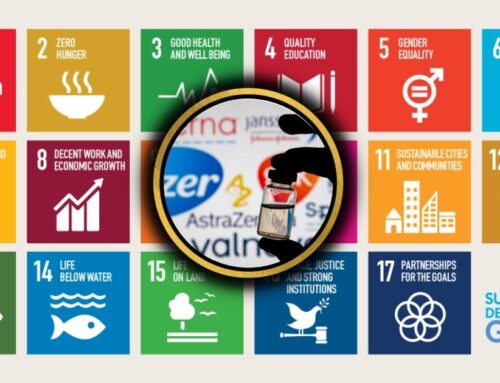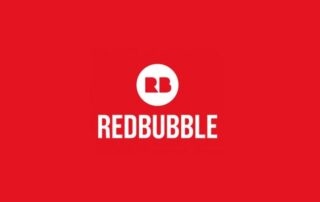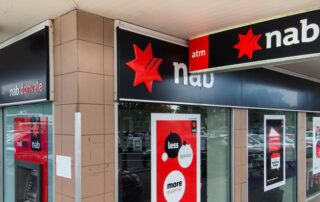
Prof Janek Ratnatunga
In conventional business practice, data was collected as a recording activity with no formal recognition that this data was an important intangible asset. Transaction recording systems only collected and analysed data for specific purposes; e.g. retailers recorded sales for accounting, the number of visits in the advertising banners for calculating advertisement revenue and so on.
However, an organisation and its people collect and create vast quantities of ad-hoc data every day. An organisation learns something new and potentially valuable each time an employee picks up the phone and talks to a customer or supplier; a salesman goes out to meet a new sales prospect or follows up on a promising lead; a person visits the organisation’s website; a customer orders a product or service, etc.
But where does this data go? It is saved into notepads or documents, on laptops perhaps; or even maybe it is just stored in a person’s head. If that is the case, then choosing what to focus on can be a matter of guesswork rather than a rigorous exercise based on fact because: (a) details can get lost or forgotten; (b) meetings and phone conversations may not be followed up, and worst of all, if staff members leave, then all their knowledge may walk out of the door with them.
Customer Relationship Management (CRM) systems is the solution to this major issue as it takes this data and turns it into useful, actionable insight that can transform an organisation. CRM is a tool and strategy for managing customers’ interaction using technology to automate business processes; and consists of sales, marketing, and customer service activities, with the aim of: (a) finding and attracting new customers, (b) nurturing them, and (c) retaining them for future business.
A CRM system helps organisations to keep their customers’ contact details up to date; track every interaction they have with the business, and manage their accounts. These systems are designed to help an organisation to improve its relationships with its customers, and improve each customer’s lifetime value. Businesses uses CRM in meeting customers’ expectations and aligning with the organisation’s mission and objectives in order to bring about a sustainable performance and effective customer relationships. The key way that data is organised in a CRM system is to classify potential customers as Leads, Prospects and Customers.
The single biggest difference between leads and prospects is their engagement: i.e. Leads are characterised by one-way communication, while Prospects are characterised by two-way communication. A Lead has reached out to a company – through a website visit, form or sign-up – and provided their information. Once the company has that information, the lead receives communications from the company with hopes of driving further engagement. More qualified leads may engage with the company, but there is no sustained back and forth.
Prospects, on the other hand, are created after a sales-ready lead is contacted by a representative of the organisation. In order to be elevated to the status of prospect, the lead has to engage in dialog with the representative (which initially may even be a non-human ‘chat-bot’). This could take the form of a chain of online responses, email or SMS messages, a phone call, or a meeting. Samples, price quotations, demonstrations, etc. may be required at this stage.
Ideally, a prospect is convinced by this dialog with the company, to buy the product or service, which then elevates the prospect’s status to a ‘Customer’. The tracking does not stop there. Customer behaviour is further tracked to determine its ‘Loyalty’ to the company’s products and services. Various loyalty programs are devised to have the customer give repeat business, and to prevent becoming a Migrator.
Many organisations have made huge investments in their CRM systems, in order to collect, integrate, analyse data, and use it to run business activities. For example, in marketing activities as part of a traditional CRM system, leads, prospects and even past and potential customers are exposed to a lot of marketing messages on a routine basis. As these messages are not targeted to individual needs, many recipients just ignore those messages as they see no personal value in them. Emails are sent to the general public or to random leads, prospects and customers about an organisation’s new product or service, and there is a significant fall-off at each stage of an email recipient: (a) seeing the message, (b) finding it has some information value to them, and (c) deciding to buy.
Email campaigns often have disappointing results because individual leads, prospects and customers feel that they are bombarded with spam; leading to an increased number of ‘unsubscribes’. A marketing campaign should be designed with an understanding of an individual recipient’s habits and behaviour and his/her perceptions of the product or service attributes, so that the messages received are perceived valuable for the recipient. Unfortunately, many organisations simplify marketing strategies by focusing a short-term relationship with large segments (of geographic, demographic and psychographic groups), assuming they all have similar wants and needs. Such an approach does not provide a company with a path of attracting, retaining, and having a long-term relationship with individual customers. Therefore, there is a need for personalisation and customisation of marketing that fits for each and every potential customer.
Big Data Analytics
The use of Big Data is a quantum leap from data analysis in traditional CRM systems (often by segmental groups), into a digital era where the huge amounts of data that the public generates in multiple sectors and industries, can be analysed by individual wants and needs. The amount of data captured, collected, and processed by organisation through digital sensors, communications, computation, and storage is valuable to businesses, sciences, government, and society at large. A large amount of data streaming from smartphones, computers, parking meters, buses, trains, and supermarkets are some of the sources from which data is captured. Search engine companies (such as Google) and social networking companies (such as Facebook) collect enormous amount of data per day and share this data to be analysed as useful information for their customers (e.g. for targeted advertising) as well as their own revenue generation.
Big Data’s Components.

The purpose of Big Data Analytics is to gain value from volumes and a variety of data by allowing velocity of analysis. This is known as 5 Vs model: (a) Volume; (b) Velocity; (c) Variety; (d) Veracity and (e) Value.
Volume means processing massive data scale from any data type gathered. Big data is a particularly massive volume with a large data sets. Such data cannot be analysed its content using traditional database tools, management, and processing. Velocity means real time data processing, specifically data collection and analysis. Velocity processes very large data in real-time processing. Big data escalates its speed velocity surpassing that of old methods of computing. Variety is any types of data from various channels and includes: (a) Structured and unstructured data obtained from audio, video, image and online behaviour; (b) Location data for example from Google Maps, webpages, and text. Veracity refers to data authenticity of the data sources: i.e. web log files, social media, enterprise content, transaction, data application. Data need a valid power of information to ensure its authenticity and safety. Value comes from analysing and mining the data and statistical and other analytical calculations. This involves a large amount of computing power.
Big Data and CRM Systems
CRM systems, combined with big data, brings a promise of big transformations that can affect organisation in delivering CRM strategies: such as accurate and up-to-date profiling of target customers; predicting customer reactions toward marketing messages on product and service offerings; and creating personalised messages that create emotional attachment to the product or service offering. This enables a company to maximise its value chain strategies and provide accurate assessment measures of how effective its campaigns based on digital marketing are.
The combination of using Big Data in CRM can certainly enhance long term relationships with customers. An example of the successful usage of Big Data in CRM was when Netflix used big data to run their streaming video service. Instead of using traditional methods of data gathering, they were able to find out what their customers wanted in terms of customer selections, mainstream cinema reviews, and video streaming; and made measurable marketing decisions based on these analytics.
CRM coupled with big data features enables more aggression in term of ‘push’ marketing strategies (such as notifications through smartphones) to the potential target audiences. Web/Apps users who make comments, such as ‘liking’ a page, or returns to the Web or Apps are potential customers who are targeted for push notifications. Technically, there are many third parties for Apps or Web sites that can help business to set up push notifications to targeted users. Notifications can be set up to be auto generated, or manual, whenever new content is available; and to be directed at a potential customer’s convenience in the form of text messages, link sharing, or smartphone notifications.
Customer Profiling
Organisations derive business value from leveraging personalisation. Customer profiling can gain invaluable insight from the big data analytics and create a competitive advantage. Some example for customers’ profiling of services include: Amazon.com, which developed a system of product recommendation based on their analysis of customers’ previous purchases data and UPS, the package delivery company, which created an application to redesign their drivers’ daily routes to achieve fleet optimisation by looking at the purchasing behaviour coupled with the location of the individuals who used their delivery service.
Customers’ profiling is possible through big data analytics because the organisations have access to more accurate data and can discover the value of the hidden data connections and patterns. CRM team generates customers’ knowledge profiling to enhance businesses and understand precisely target audience, personalise message for each potential customer, and tailor the message to fit with the individual customer’s interest and preferences. CRM with big data analytics can also develop comprehensive knowledge of customers product usage for service-related decision making. For example, Roll Royce applies big data analytics in the aircraft engine-manufacturing and service sector, and uses the results to predict when and where breakdown of aircraft engine might occur by installing sensors to collect data directly from the engines Hence, RR does not only just sell engines, but it also sells packages of both engines and monitoring services that generates profits by charging customers based on usage, repairs and replacements. This service currently accounts for more than 70% of RR’s annual revenue in its aircraft engine division, and is a good example of leveraging big data to create a competitive advantage.
Customer profiling is also possible because Big Data with geolocation analytic capabilities promotes quick and appropriate marketing strategies. Companies can be quicker than their competitors in marketing a product or service at an acceptable price, by understanding the purchasing power of potential buyers from data of their financial strength. Netflix detects traffic details of customers’ views to spot problems in an area, and adds systems that can help the company to predict targeted future demand.
Big data also reduces the maintenance costs of CRM systems. The emergence of cloud computing has enabled big data analytics to be cost efficient, easily accessed, and reliable. Whenever data analytics go down, it impacts on marketing activities and causes customers to mistrust the system. As such, reliability is a competitive advantage of cloud computing in big data applications.
Social Networks
The concept of a ‘Social Network’ defines an organisation as a system which contains objects such as people, groups, and other organisations that are linked together by a range of relationships. Big Data Scientists recognise that the Web today is a social network having many Collaboration Platforms like wikis, blogs, and social media; all aiming to facilitate creativity, collaboration, and sharing among users for tasks (other than just emailing and retrieving information).
While in-person social networking – such as gathering in a village market to talk about events – has existed since the earliest development of tribal groups, the Web enables people to connect with others who live in different locations, ranging from across a city to across the world. The success of social networking services can be seen in their dominance in society today, with Facebook having a massive 2.41 billion active monthly users. LinkedIn, a career-oriented social-networking service has 600 million users, with about half being monthly active users.
Such social networks have empowered customers to make ‘global conversation’; and for customers to easily express their opinions and expectations about product or services to a very wide circle. Film, restaurant, hotel, and tradesmen reviews sites are a plenty, and even doctors and university lecturers are being reviewed in these ad-hoc social ratings networks (Rottentomatos; Zomato; Trip Advisor and Airtasker are well known review sites).
The Social CRM
Whilst business organisation may utilise the increasing amount of big data found in people conversations for company’s benefit, social networks can also hurt a company as they allow customers to express their complaints and negative opinions. As such, companies are realising that they cannot manage their customer relationship by only using traditional (in-house) CRM techniques, even if these are coupled with Big Data. This is because with external social networks, a company has very little control over a medium that can be used to communicate a political agenda to the public (such as negative reviews about the company’s products and services) placed not only by disgruntled customers and employees; but also, by competitors.
In the context of customer relationships therefore, whilst social networks provide a means of strengthening relationships between customers and service providers; these may also be utilised to create long-term relationships between business organisations and their customers and public in general.
Adopting social networks into a company’s CRM is known as Social CRM; and developing one has become a ‘must’ strategy for any organisation today to understand their customers better. Social CRM has an impact towards multi channels relationships in all types of organisations – in both the public and private sectors. By playing a significant role in the management of relationships, Social CRM stimulates fundamental changes in a company’s strategies based on an individual customer’s behaviour gleaned from conversations in the social network combined with the company’s CRM system. Some of the applications of SCRM are:
Social Engagement: SCRM tools allow businesses to better engage with their prospects and customers by listening to sentiments about their products and services.
Social Customer Service: Rather than companies delivering only outbound integrated marketing communications (e.g. media advertising), analysing inbound individual customer queries better allows for meaningful points of engagement for brand advocacy.
Personalized Marketing Strategy: The ability to create custom content is now increasingly dependent on access to reliable, qualitative social network user data to facilitate precise and individualised audience segmentation.
For example, Target, a department store was able to develop a sales predictive model by combining Big Data with the web browsing habits of individuals who visited its website. Red Bubble, an E-Commerce company is able to predict sales (by item for the coming month, by country) with a 95% accuracy, by tracking how much time an individual took in looking at an online item for sale on their website. YouTube uses the recommended systems to keep the user switching to content within YouTube (called ‘down the YouTube Hole’) without going to another streaming service. Also, an individual’s Google search can result in a viewing suggestion on YouTube; and vice-versa.
IBM and Twitter are involved in a partnership on data analytics for the purpose of selling analytical information to corporate clients in order to provide businesses with Social CRMs of real-time conversations; in order for their clients to make smarter decisions. With IBM’s analytical skills and Twitter’s massive data sources, the partnership has created an interesting strategic partnership as both partners leverage on their respective strength and expertise.
But there are Privacy issues with Social CRMs.
Human beings value their privacy and the protection of their personal sphere of life. They value some control over ‘who knows what’ about them. They certainly do not want their personal information to be accessible to just anyone at any time. But recent advances in information technology along with Big Data Analytics and Social CRMs have threatened privacy by: (a) reducing the amount of control over personal data, and (b) opening up the possibility of a range of negative consequences as a result of access to personal data.
As Big Data and Advanced Information Technology allows for the storage and processing of exabytes of data, organisations now have the technical capabilities to collect, store and search large quantities of data, including private telephone conversations, internet searches and electronic payments.
Unlike in a traditional CRM system, much of this information is collected without the knowledge of the individual provider of the information. Information is routinely collected on individuals who have never interacted with the company in any way; but may be a friend of a person who had inquired about a company’s product or service. These data links are enough for such a third-party individual’s data to be collected and mined.
For business firms, personal data about customers and potential customers is now a key asset. At the same time, the meaning and value of privacy remains the subject of considerable controversy. The combination of increasing power of new technology and the declining clarity and agreement on privacy give rise to problems concerning law, policy and ethics.
Data collection, information technology and the internet are highly unregulated, and there are no easy answers about the ethics in IT, nor who should be the arbiter (controller) of whether those ethics are employed. Ultimately, the problem is that technology moves too fast and governments move too slow.
Management Accounting Implications
Public or private organisations see the potential of big data and mining to be turned into big value by combining its CRM system with Big Data analytics. A sophisticated CRM system requires extensive support from accurate data analytics to ensure that potential customers are engaged and find value in their relationship with the company. Since customers make buying decisions every day – and every decision depends on a consideration of cost, benefits, and value – management accountants need to be very aware of the value-creation potential of marrying traditional CRM systems with Big Data analytics. Big data analytics aims to support customer relationship strategies so that organisation can quantify sales transactions, evaluate promotional campaigns, develop product awareness at an individual level, and build long term relationship and brand loyalty.
However, management accountants must also be very aware that the ‘wild-child’ that has emerged in the union of Big Data and CRM, called Social CRM, is very difficult to control, and can seriously affect corporate value if negative publicity about the company goes viral in social networks.
Professor Janek Ratnatunga, CMA, CGBA

























